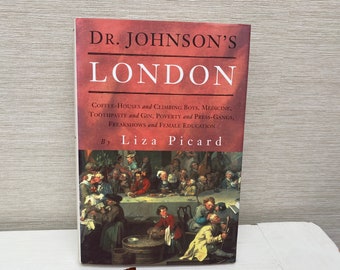

The miles of wooden pipes burst constantly, delivered water to houses sometimes only once or twice a week, and served as habitation for eels and fish. Perhaps the most extraordinary subject here is that of the water pipes under London’s streets. Whether or not a person begged for supper at a church, purchased it from a baker on the street, or dined at home said much about where that same person would be buried years later-in a mass grave or in a Chippendale casket.

Joseph Massie’s analysis of family incomes also gave her a vivid picture of daily life: with Massie’s statistics she reconstructs the most private of experiences-finances. Crucial to Picard’s research into the mundane were parish records, pamphlets, and such Fleet Street publications as The Gentleman’s Magazine. James Boswell, despite his repeated use of prophylactics, contracted gonorrhea several times, for example. Celebrities other than Johnson and Hogarth appear often. The next brief describes how the same people baited animals, setting dogs on bulls or pitting roosters against one another for fun and profit. In a chapter devoted to amusements, we first read that in London the poor drank 11,326,070 gallons of gin in one year.

The cumulative effect of these briefs is powerful. An inventory of daily life in London circa 1755, when Samuel Johnson published his Dictionary of the English Language.Īmateur historian Picard ( Restoration London, 1998) has compiled an enormous collection of factoids about 18th-century London, an era depicted in William Hogarth’s prints “Gin Lane” and “Beer Street.” The author writes page-long briefs on subjects ranging from hats to poorhouses to the king’s budget.


 0 kommentar(er)
0 kommentar(er)
